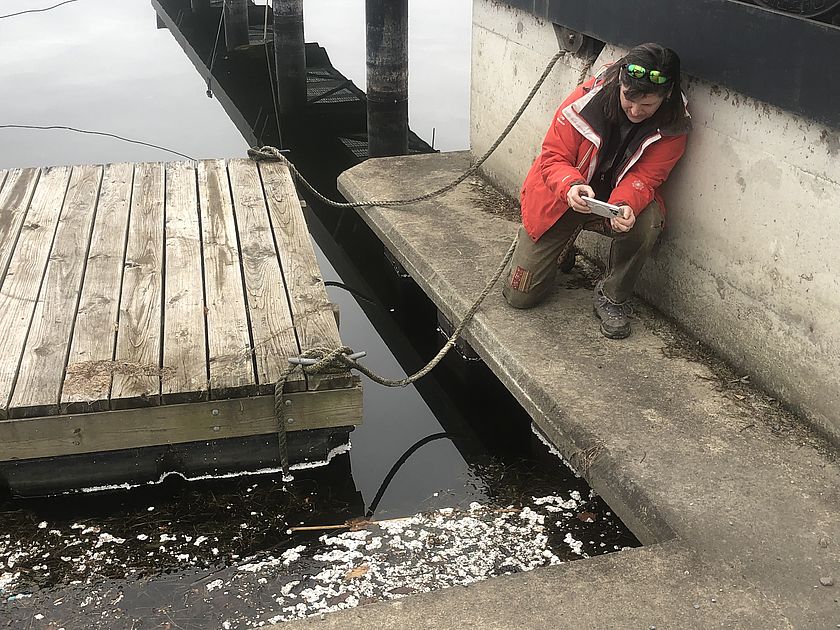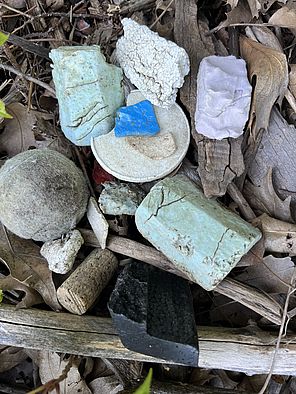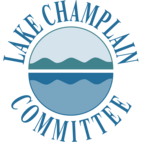Cleaner Shores, Healthier Waters: Taking on Marine Debris in the Lake Champlain Basin
May 2025 Lake Look
As May approaches, skis and other winter gear get tucked away, and it’s time to start preparing for the warmer days ahead. Some of us may already be dreaming about a relaxing fishing trip or hoping for a sighting of “Champ,” the legendary monster said to live in Lake Champlain. Our beloved aquatic creatures share oxygen, food, and habitat —but unfortunately, they also share the water with something far less natural: our trash. A shampoo bottle floating in the lake, an abandoned boat, or a buoy washed up on a beach are all examples of what we call “marine debris.”
Marine debris is any human-made material that ends up in our waterways, polluting the environment. Despite its name, marine debris is not restricted to oceans. Marine debris is also found in freshwater bodies like Lake Champlain, Lake George, and the rivers and streams that flow into them. So how does marine debris get to our waterways? What are its impacts? What can we do?

From land to waterways
While some marine debris comes from water-related activities such as boating and fishing, most marine debris enters waterways from the land. Trash is released into the environment from poor waste management and both intentional and accidental littering. This debris can then be blown by the wind or moved into nearby waterways by rain and snowmelt. This means a cigarette butt or a soda can tossed on your street can find its way to Lake Champlain!
Much of this movement of trash happens unnoticed—but things look very different after a major storm. High winds, heavy rains, and flooding can sweep up unexpected items like yard furniture or break apart larger objects like docks. This can create clusters of marine debris that are hard to miss.
Why do we care about marine debris?
Marine debris comes in all shapes and sizes–from sunken boats to microplastics, which are plastic pieces smaller than a pencil eraser. Regardless of size, marine debris can impact the environment, human health, and the economy. A single abandoned boat can turn a navigable channel into an obstacle course. Other types of marine debris like sharp metal objects can deter people from enjoying a nice day at the beach. Fish and birds that eat pieces of plastic are exposed to toxic chemicals and may even starve to death thinking they are full.
Plastics, so pervasive in modern life, are a common type of marine debris. Expanded polystyrene foam, commonly known as Styrofoam, is one of several forms of plastic foam often found during cleanups on the shorelines of Lake Champlain. Made of tiny air pockets, plastic foam is light, breaks apart easily, and moves quickly across the water and shorelines. Plastic foam from dock floats, food service, and packaging makes up a large percentage of marine debris in Lake Champlain Basin.
But there is good news! Both New York and Vermont recently banned the use of Styrofoam food and beverage containers. Since then, we’ve seen less foam trash during cleanups. In addition, Vermont’s new Flood Safety Act, passed in 2024, requires Styrofoam floatation in new docks and other floating structures to be covered with a protective shell. Such covering helps prevent foam from breaking into tiny pieces that are nearly impossible to remove. These policies are an important step forward, but continued efforts are needed to keep foam out of the water.

A new coalition focused on marine debris in the Lake Champlain Basin
Each morning, Diana, a retired teacher, walks the Lake Champlain shoreline near her home—dog leash in one hand, bucket in the other—collecting foam, wrappers, and bottle caps before they reach the water. Her small act reflects the kind of stewardship that the newly formed Lake Champlain Basin Marine Debris Coalition aims to support and expand.
Formed in late 2024, the Coalition works to raise public awareness and cut down on marine debris in Lake Champlain, Lake George, and the rivers and streams that flow into these waterbodies. The group focuses especially on reducing foam pollution. With support from the National Oceanic and Atmospheric Administration (NOAA), the Coalition is led by six organizations: Lake Champlain Sea Grant, Lake Champlain Committee, Rozalia Project, Conservation Law Foundation, Vermont Boat and Marine Association, and Lake George Association. It is now looking to expand its efforts and reach more partners.
“We’re excited to welcome more partners to our Coalition! The Coalition is the largest coordinated effort to prevent marine debris, especially foam, in both Lake Champlain and Lake George,” said Aude Lochet, Lake Champlain Sea Grant Water Resources Outreach Specialist and coordinator of the Coalition. “By working together, we hope to elevate the issue of marine debris in the Lake Champlain Basin and show that this problem can be solved.”
The Coalition has three goals: to bring together diverse groups and organizations with a shared commitment to reducing marine debris in local waters, to engage youth in marine debris education, and to support the efforts of lakeshore businesses and residents to prevent plastic foam from entering our lakes and streams.
How you can help
Visit the Marine Debris Community Action Coalition webpage to learn more about its work and its FREE youth programming on marine debris: uvm.edu/seagrant/lake-champlain-basin-marine-debris-coalition.
Take simple actions that can make a big difference. For example, dispose of trash properly, keep bin lids closed, and store outdoor equipment in a secure place.
Join a cleanup event in your community.
If you own a dock that has unprotected foam floatation or broken floats, plan to replace the fragile foam and broken floats with durable floats.
Report areas of marine debris accumulation using the Marine Debris tracker app at debristracker.org.
Lake Look is a monthly natural history column produced by the Lake Champlain Committee (LCC). Formed in 1963, LCC is a bi-state nonprofit that uses science-based advocacy, education, and collaborative action to protect and restore water quality, safeguard natural habitats, foster stewardship, and ensure recreational access. You can join, renew your membership, make a special donation, or volunteer to further our work.
